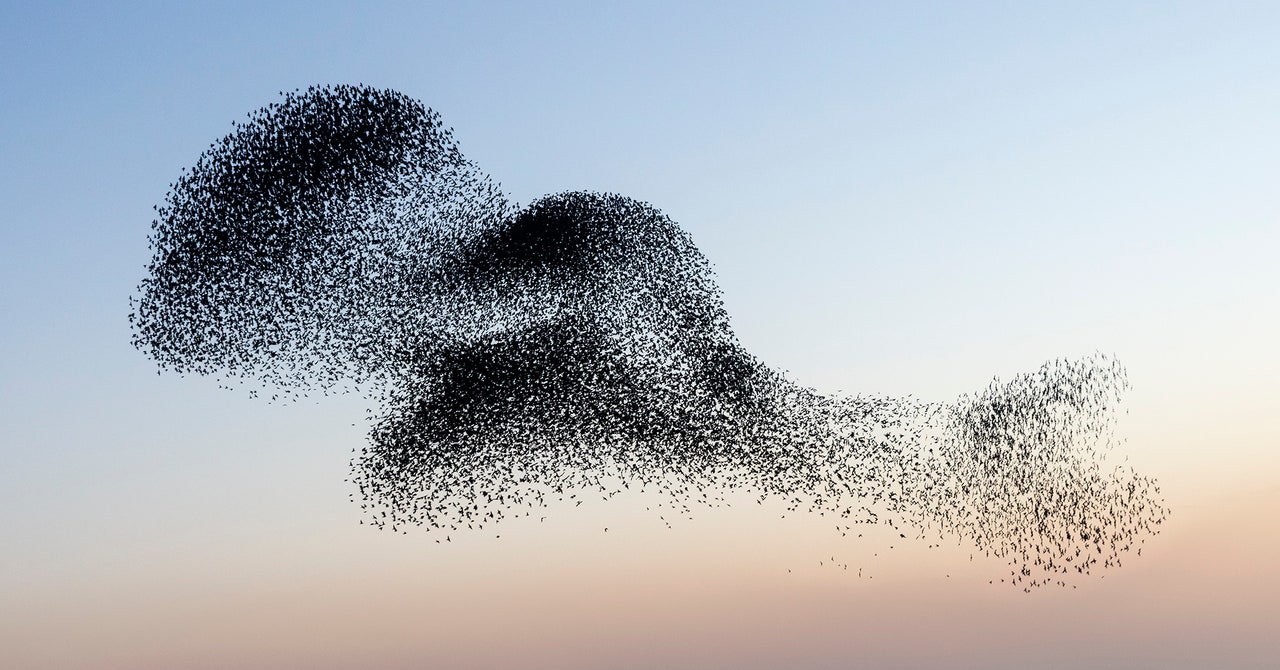Photographer Søren Solkær describes early autumn in Denmark as eternal. When the sky grows darker around sunset, time stops. But this imperishable moment is sometimes caused by a phenomenon slightly rarer than a setting sun: hundreds of thousands of starlings gathering to accentuate the inevitable darkness of nightfall in a flying formation called a murmuration.
The Danish refer to a murmuration as a “black sun,” which Solkær adopted as the title for his photo book devoted to the European starlings. He began documenting them in Denmark in 2017 and has since traveled to England, Germany, the Netherlands, Italy, and Catalonia in northern Spain to follow their migration to southern Europe in the fall.
Solkær captures the most intricate moments of their flight when he freezes the starlings’ motion by using an extremely high ISO between 10,000 and 15,000. (ISO refers to the sensitivity of the camera’s sensor to light; high ISOs allow photographers to capture darker environments while still being able to use a fast shutter speed.) Because dusk lasts so long this far north in summer and early fall, when the sun rarely fully sets, it’s the only way Solkær can photograph the ever-changing structure of the flock. Of the 120 murmurations he documented, most of them lasted seconds and only about six lasted up to 30 minutes. “That’s pretty rare to experience,” he says.
This most intricate and mysterious part of a murmuration occurs when a predator enters the frame, which is nearly impossible to see with the naked eye. Depending on the density of the flock and speed of the predator, the starlings’ reactions can take many escape patterns, including flying outward to create a vacuole—an empty space. Or they might fly swiftly in one direction, producing a pulsation through the flock resembling a wave. “It’s only when they get attacked by predators, especially falcons, that they create these amazing images in the sky,” Solkær says.
The shapes formed by the starlings’ anxious flight for survival can also be used to confuse their predators. Each bird will mimic the motion of its nearest neighbors, angling its back toward the predators.
The murmurations in the six locations Solkær has traveled to are similar, but the number of predators in certain regions in Europe will affect the variety of shapes Solkær can photograph. “There’s been way more falcons down in Catalonia than in Denmark,” he says. “Which is a bad thing for the starlings, but it’s a very good thing for me, because, as mean as it sounds, I’m hoping they get attacked. That’s when the visual action really happens.”
As lost in the moment as Solkær feels thanks to the fleeting nature of the murmuration, he will never miss the opportunity to capture them. “Sometimes I come home with a thousand pictures and I have no idea exactly what I’ve captured, because the birds move extremely fast. It’s an ever changing organic shape.” he says. “It’s very, very beautiful.”
More Great WIRED Stories
This article is auto-generated by Algorithm Source: www.wired.com


